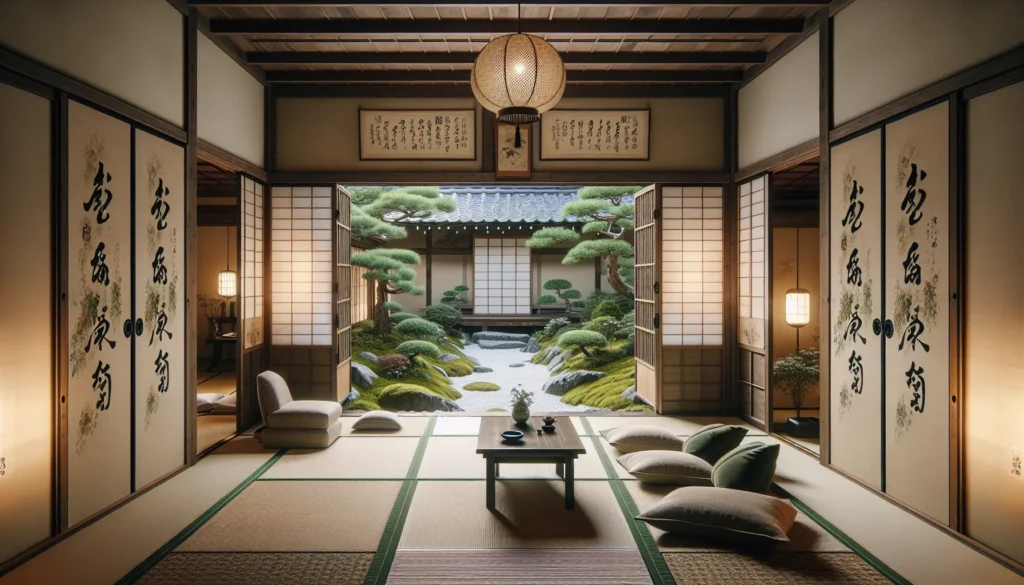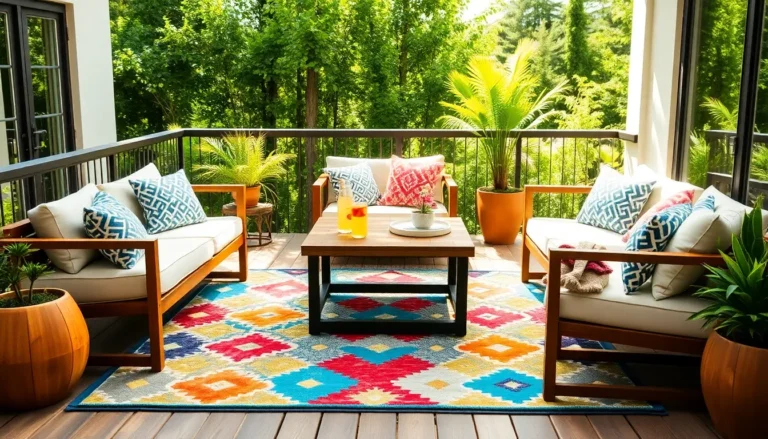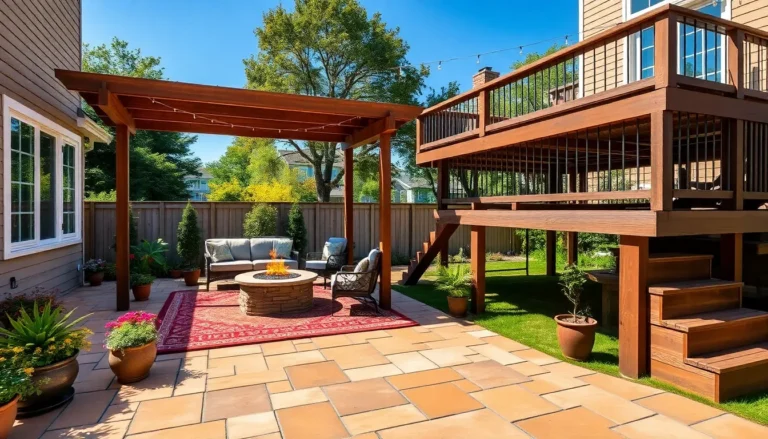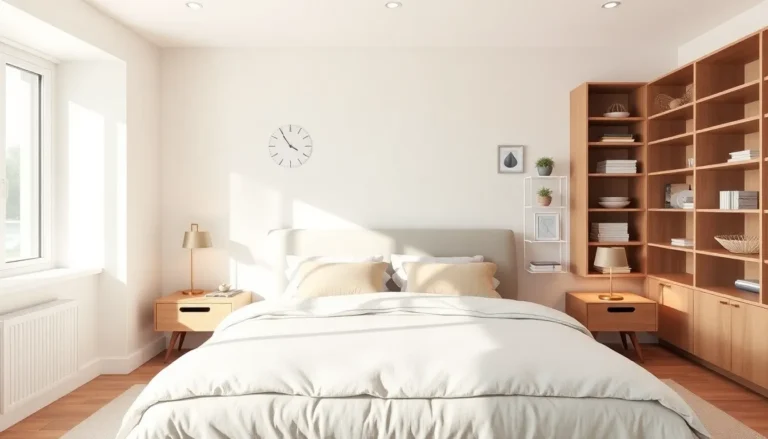Table of Contents
ToggleJapanese home design isn’t just about aesthetics; it’s a lifestyle choice that blends simplicity with functionality. Imagine stepping into a space where every element feels like a warm hug from nature, and every corner whispers tranquility. It’s not just a house; it’s a zen retreat that makes you question why you ever thought a cluttered living room was acceptable.
From tatami mats to shoji screens, Japanese design principles prioritize harmony and balance, turning homes into serene sanctuaries. Whether you’re a design aficionado or just someone who wants to impress guests with your newfound knowledge, exploring the nuances of this style will have you saying “kawaii” in no time. Get ready to dive into a world where less really is more, and prepare for a home transformation that’ll leave you feeling like you’ve just stepped into a Studio Ghibli film.
Overview Of Japanese Home Design
Japanese home design emphasizes simplicity and functionality, similarly to how minimalism effectively declutters spaces. This design philosophy fosters serene and tranquil environments, allowing individuals to connect with their surroundings. Key elements include tatami mats, traditional rush grass flooring that provides warmth and comfort, and shoji screens, sliding doors made of thin wooden frames and translucent paper, which softly diffuse light.
Natural materials hold significance in Japanese homes, creating a harmonious aesthetic. Wood, stone, and paper are commonly used, promoting a connection to nature. Open floor plans enhance the flowing, airy feel of the space, encouraging movement and interaction. Indoor-outdoor integration is often achieved using large windows or sliding doors that bring in natural light.
Several characteristics define Japanese design. Neutral color palettes create calming atmospheres while incorporating natural hues. Traditional Japanese gardens often accompany homes, emphasizing the bonds between architecture and nature. Furniture tends to be simple, functional, and low to the ground, aligning with a style that prioritizes comfort.
The layout of spaces reflects careful thought. Rooms serve multiple purposes, allowing for flexibility in living arrangements. This adaptability suits modern lifestyles while maintaining traditional values. The inclusion of sliding walls promotes versatility, making each home unique and customizable.
Japanese home design serves as a cultural expression that speaks to the beauty of simplicity. With its focus on harmony, balance, and functionality, this style captivates those looking for an aesthetic that elevates everyday living.
Key Characteristics Of Japanese Home Design
Japanese home design stands out for its commitment to simplicity and tranquility. Several key characteristics define this aesthetic.
Minimalism
Minimalism plays a central role in Japanese home design. Spaces appear uncluttered, allowing for a sense of calm. Each element holds purpose, from furniture to decor. Furniture often consists of low-profile pieces that promote a grounded feeling. Unnecessary embellishments get avoided, further enhancing clean lines and open spaces. Functionality remains prioritized, enabling efficient use of space while retaining an inviting atmosphere.
Use Of Natural Materials
Natural materials form the backbone of Japanese home design. Wood, stone, and paper contribute to a harmonious connection with nature. Floors often feature tatami mats, which provide warmth and comfort. Walls may incorporate textured finishes or traditional plaster, offering a tactile experience. Sliding shoji screens make extensive use of paper, allowing flexibility in room usage while maintaining a serene aesthetic. In turn, this reliance on organic materials promotes a sense of serenity and enhances the overall ambiance.
Emphasis On Natural Light
Natural light enriches Japanese home design, creating bright and airy environments. Large windows and sliding doors permit sunlight to permeate living spaces. Open floor plans allow light to travel freely throughout the home. Strategically placed windows bring views of gardens and outdoor areas indoors. Light not only enhances aesthetic appeal but also fosters a connection to the natural surroundings. This thoughtful incorporation of natural elements contributes to overall well-being and mindfulness in the living space.
Traditional Elements In Japanese Home Design
Traditional Japanese home design incorporates elements that foster tranquility and simplicity. Two significant components are tatami mats and shoji screens, which play crucial roles in creating serene living environments.
Tatami Mats
Tatami mats consist of rice straw and are often covered with a woven rush grass. They provide warmth and comfort, inviting residents to walk barefoot. In addition to their practical benefits, tatami mats contribute to a natural aesthetic, promoting harmony within the home. Using these mats in various rooms encourages a seamless flow and flexibility in space usage. Furthermore, the scent of tatami adds an old-world charm, enhancing the overall atmosphere.
Shoji Screens
Shoji screens are wooden frames covered with translucent paper. These screens serve as room dividers and help in controlling light levels within spaces. Allowing natural light to filter through, shoji screens create soft illumination that fosters a calming environment. Flexibility in room functions is made possible by using shoji screens, as they can easily be opened or closed. Additionally, the elegant design of shoji screens adds visual interest while maintaining minimalism, which lies at the heart of Japanese home design.
Modern Adaptations Of Japanese Home Design
Modern adaptations of Japanese home design blend contemporary aesthetics with traditional elements, creating functional spaces that honor the past while embracing the future. This fusion enhances the home’s character and simplifies daily life.
Blending Modern And Traditional Styles
Combining modern and traditional styles, architects incorporate traditional materials like wood and paper within sleek, minimalistic structures. Designers often utilize shoji screens in open spaces, maintaining functionality while adding cultural significance. Natural lighting plays a critical role in these designs, allowing for the seamless transition between interior and exterior environments. Contemporary furnishings complement traditional tatami mats, merging comfort with elegance in multi-purpose rooms. This approach showcases how modern innovations can retain the essence of Japanese design, encouraging practicality alongside artistry.
Eco-Friendly Innovations
Innovations in sustainable materials transform Japanese home design into a leader in eco-friendliness. Bamboo and recycled wooden structures represent the shift towards renewable resources, while solar panels enhance energy efficiency. Builders prioritize green roofs and gardens that improve air quality and promote biodiversity. Water-efficient fixtures emphasize conservation without sacrificing style. By implementing these eco-friendly choices, homes embody a commitment to wellness, echoing the harmony found in traditional Japanese values.
Tips For Incorporating Japanese Design Principles
Embrace simplicity by choosing furniture that is functional and low to the ground. Look for pieces that provide comfort without cluttering the space. Utilize natural materials, such as wood and stone, to establish a warm atmosphere that connects indoors with nature.
Incorporate tatami mats in living areas. Their unique texture invites barefoot walking and enhances a room’s organic aesthetic. Explore shoji screens as versatile room dividers. These functional elements diffuse light and create defined spaces without sacrificing openness.
Maximize natural light by positioning large windows strategically. Expansive glass openings foster a connection with the outdoors and enrich the interior environment. Choose neutral color palettes to promote a calming atmosphere. Soft beiges, whites, and greens reflect tranquility and allow for easy coordination with natural components.
Consider multi-purpose rooms to support flexibility in usage. Designing spaces for varied functions enhances practicality while maintaining the serene nature of Japanese aesthetics. Implement minimalistic decor. Each piece should serve a purpose, contributing to the overall harmony and balance of the home.
Design traditional Japanese gardens as extensions of living spaces. They enhance tranquility and strengthen the bond between interior and exterior elements. Integrate eco-friendly features like bamboo or recycled materials. This adds a modern touch while upholding sustainable practices that reflect traditional values.
Incorporate artwork or decor that highlights craftsmanship. Items with cultural significance can elevate the aesthetic while retaining a minimal look. Demonstrate an appreciation for nature through carefully curated plants and flowers. Their presence reinforces the essence of Japanese home design and promotes well-being.
Japanese home design offers a unique blend of tranquility and functionality that resonates with many. By embracing simplicity and natural materials, it creates spaces that foster a deep connection to nature and promote a sense of calm. The incorporation of elements like tatami mats and shoji screens not only enhances aesthetics but also serves practical purposes.
As modern adaptations continue to evolve, this design style remains relevant by integrating contemporary innovations while honoring traditional roots. For those seeking to transform their living spaces into peaceful retreats, the principles of Japanese design provide a thoughtful approach that elevates everyday life. Embracing these concepts can lead to a harmonious home environment that reflects both beauty and purpose.







